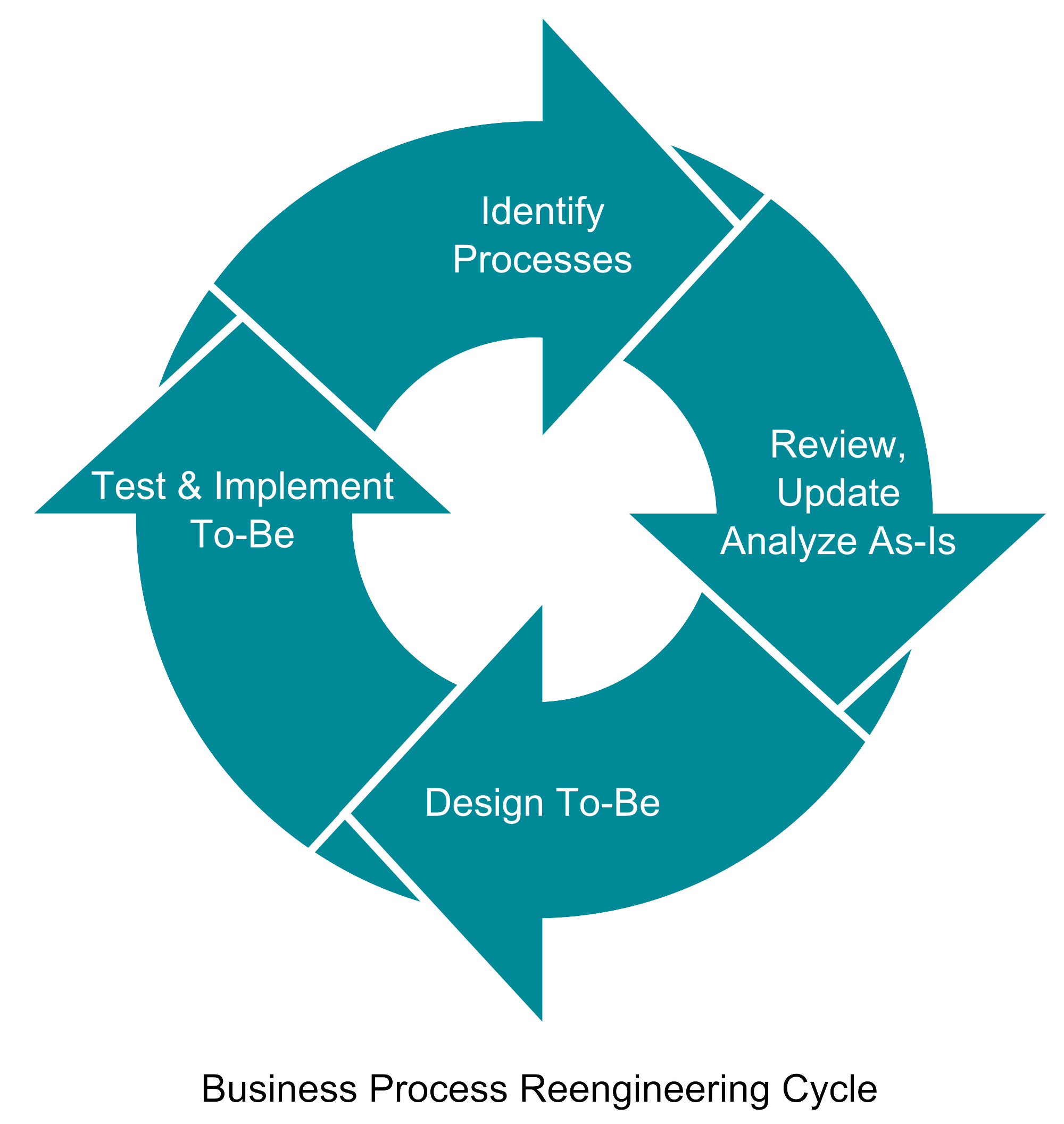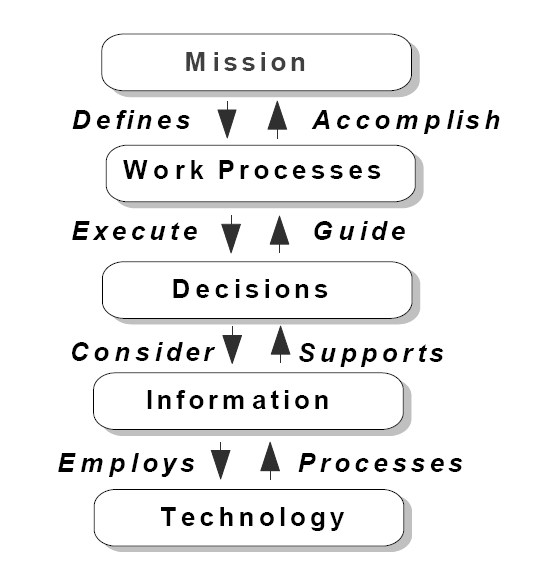Business Process Reengineering (BPR) is the practice of rethinking and redesigning the way work is done to better support an organization’s mission and reduce costs. Reengineering starts with a high-level assessment of the organization’s mission, strategic goals, and customer needs.
Basic questions are asked, such as “Does our mission need to be redefined? Are our strategic goals aligned with our mission? Who are our customers?”
An organization may find that it is operating on questionable assumptions, particularly in terms of the wants and needs of its customers. Only after the organization rethinks what it should be doing, does it go on to decide how best to do it.
Within the framework of this basic assessment of mission and goals, re-engineering focuses on the organization’s business processes—the steps and procedures that govern how resources are used to create products and services that meet the needs of particular customers or markets.
As a structured ordering of work steps across time and place, a business process can be decomposed into specific activities, measured, modeled, and improved. It can also be completely redesigned or eliminated altogether.
Re-engineering identifies, analyzes, and re-designs an organization’s core business processes with the aim of achieving dramatic improvements in critical performance measures, such as cost, quality, service, and speed.


